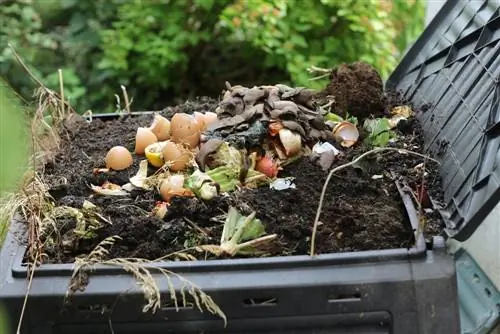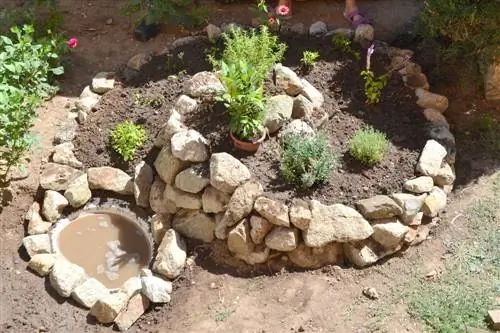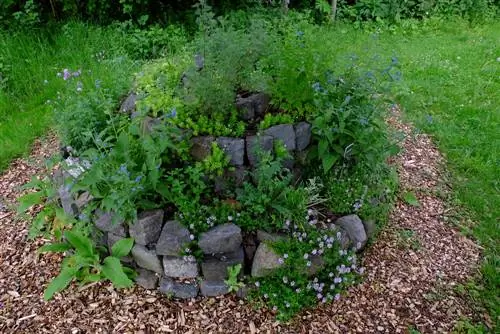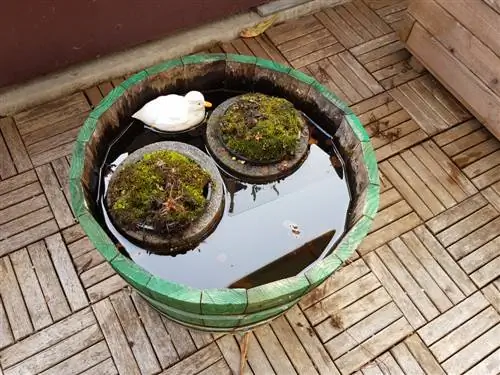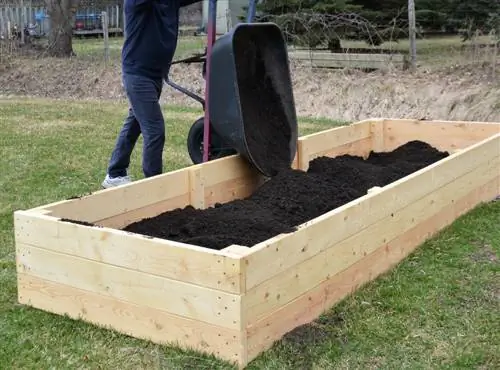- Author admin [email protected].
- Public 2023-12-16 16:46.
- Last modified 2025-01-23 11:22.
Even if the compost heap is a storage place for waste from the kitchen and garden, you have to pay attention to a few aspects when filling it. Undesirable processes can quickly occur if the initial situation is not optimal.

What do I have to pay attention to when filling my composter?
When filling a composter, you should use a balanced mix of kitchen and garden waste, ensure optimal moisture, temperature and oxygen supply, and mix or turn the compost regularly to avoid unwanted processes.
This belongs in the compost
If you create a compost, we recommend a varied mix of different waste. These ensure a balanced composition of nutrients and should be structurally varied. Mixtures of kitchen and garden waste that are dry and wet are good. One-sided filling with fruit, clippings or wood cuttings is negative.
Good mixes:
- Leftover fruit and vegetables with grass clippings
- Coffee powder and tea bags with leaves
- Banana and citrus fruit peels in small quantities
- Weeds, eggshells, crop residues and pure wood ash
Make sure the conditions are optimal
Bacteria, fungi and animals that decompose organic waste have high demands on the environmental conditions. Undesirable processes take place on incorrectly created compost.
Moisture
Small animals, bacteria and fungal spores need a moist environment to survive. The right balance is crucial because other creatures feel more comfortable in substrates that are too wet than in fresh material. To promote a balanced environment, you should place the compost bin (€43.00 on Amazon) in a partially shaded place and protect it from rain with a cover. Excess moisture seeps through the open ground. Water the contents if they dry out in hot summer months.
Temperature
The soil fauna needs warm conditions for active metabolism. Hot temperatures quickly arise in the composter, under which the rotting processes run optimally. To ensure these requirements, the correct insulation of the containers is an advantage. A location protected from the wind and partially exposed to sunlight also proves to be beneficial for the correct compost temperature.
Oxygen
The microfauna that is involved in the decomposition processes lives under aerobic conditions. These decomposers need oxygen for their metabolism. Substrates that are too compacted and wet do not ensure optimal oxygen supply. Then anaerobic microorganisms appear, which you can recognize by the typical sulfur smell. You can prevent this change by mixing regularly or by moving the compost heap.

